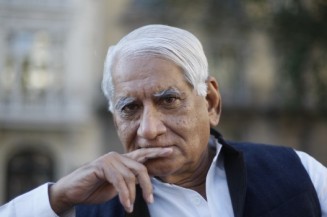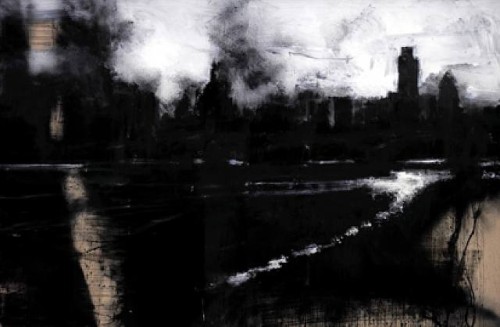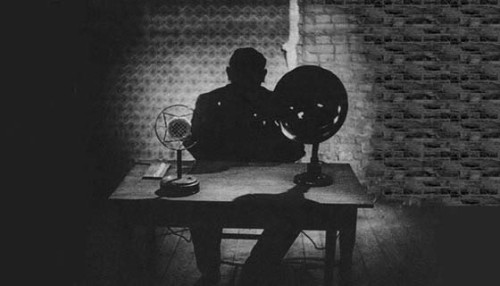
Hiroshi Watanabe, photography.
“In 2010, a team at the University of Michigan led by the psychologist Sara Konrath put together the findings of 72 studies that were conducted over a 30-year period. They found a 40 percent decline in empathy among college students, with most of the decline taking place after 2000. Across generations, technology is implicated in this assault on empathy. We’ve gotten used to being connected all the time, but we have found ways around conversation — at least from conversation that is open-ended and spontaneous, in which we play with ideas and allow ourselves to be fully present and vulnerable.”
Sherry Turkle (New York Times, 2015)
“My difficulty is only an — enormous — difficulty of expression.”
Ludwig Wittgenstein
“It is quite natural for people who run after immediate ‘practical’ results to want to free themselves…from our theory.”
Rosa Luxemburg
The article in the New York Times, quoted above, about the lack of empathy in high school and college students, linked to split attention and the manic use of texting and social media platforms, generated a lot of discussion and commentary. Many teachers I know shared the article and talked about it. One topic that came up repeatedly was the loss of curiosity in students. I’ve noted this before. And that loss of curiosity feels connected to, clearly, this loss of empathy (and more on that, specifically, below) but also to the rise in totalitarian/fascist world views — most significantly in the U.S. And this brings up a number of issues; first it suggest direct government propagandizing, second it touches on the strange somnambulant quality of the society over all, and third the acute level of resentment in, it seems, nearly everyone. And resentment is tied to narcissism.

Giulio Paolini
Francis Tustin has written fascinatingly on autism, and it is interesting to link autism, in some areas, with narcissism. At least to the extent that the narcissistic child, like the autistic child, has trouble with managing object relations. That is, the object is there to be controlled, or more correctly to be manipulated. It is impossible to share at this level, for sharing is experienced as a loss of control. The distinction may lie in the fact that the autistic is protecting itself, while the narcissist desires a kind of omnipotence. James Grotstein wrote: “Like the autistic child, the narcissist hates object relations but is stuck with them and so has to manipulate them to their pathological needs and has to suffer the consequences. They hate being alone, they hate needing their objects, but they deny their feelings of envy by purloining in phantasy those aspects of the object they need, so as to bypass envy and gratitude.” Now, there are connections here to what Freud wrote about the structure of narcissism, the split between the internalizing of the lost object — on the one hand into an aspect of the ego-ideal, and the other into the ego itself. And that the former treats the latter with acute sadism. This is a reductive description, but for now it will do. This construct forms a sort of sado/masochistic dynamic of secondary narcissism.

Salvatore Rosa. 17th century. Italy.
This is relevant when examining U.S. society, but also it has had an enormous influence on the culture. Now, the myth of Narcissus is built around the idea that Narcissus must never know himself, and if he avoids this fate, he will, according the seer, live to a ripe old age. In Ovid (Brookes More, tr.) “There was a fountain silver-clear and bright, which neither shepherds nor the wild she-goats, that range the hills, nor any cattle’s mouth had touched–its waters were unsullied–birds disturbed it not; nor animals, nor boughs that fall so often from the trees. Around sweet grasses nourished by the stream grew; trees that shaded from the sun let balmy airs temper its waters. Here Narcissus, tired of hunting and the heated noon, lay down, attracted by the peaceful solitudes and by the glassy spring. There as he stooped to quench his thirst another thirst increased. While he is drinking he beholds himself reflected in the mirrored pool–and loves; loves an imagined body which contains no substance, for he deems the mirrored shade a thing of life to love. He cannot move, for so he marvels at himself, and lies with countenance unchanged, as if indeed a statue carved of Parian marble.” Now it is interesting that the nymph Echo, who follows Narcissus into the woods, is too frightened to answer when the youth calls out ‘who is there’? She simply repeats what he says. The nymph is spurned by Narcissus who then falls in love with his reflection in the pool. But he fears to ever touch the water, or embrace what he desires, for it could mean losing sight of his reflection in the disrupted water. To reach for and caress is to lose sight of. Echo wastes away until only her voice remains. Narcissus becomes more and more thirsty, but still he cannot act on his desire. The version of the myth in Ovid, the best known version, is ambiguous and complex. The desire (love) of what is in the world is illusory, or rather the world, the love object is an illusion, but it is unclear if the desire is counterfeit or not. That is what is so odd about Ovid’s version.

Former coking plant, Lauchammer, Germany.
Writing of Ovid and Narcissus, Norman O. Brown wrote: “From mirror to mirror, an eternal recurrance of meaningless alternatives.” One could, today, say from selfie to selfie.
Curiosity is something I feel the loss of very acutely. There is story told by Edward Dorn who was Charles Olson’s student at Black Mountain. Dorn asked for a list of books to read. Olson said..
“Best thing to do is to dig one thing or place or man until you yourself know more about that than is possible to any other man. It doesn’t matter whether it’s Barbed Wire or Pemmican or Paterson or Iowa. But exhaust it. Saturate it. Beat it. And then U KNOW everything else very fast: one saturation job (it might take 14 years). And you’re in, forever.”
I find today that almost nobody takes art seriously. Not really. Its a hobby. So how does this relate to narcissism? I think it is important to better understand what narcissism is, and how it manifests itself. In the myth Narcissus is perfectly suited to hear the echo of his own voice. And he hears it in the person of the nymph *Echo*. So the narcissistic individual turns the other into his own echo chamber, in a sense. And here the reflection of the screen, literal and metaphoric, is telling. I joke about the selfie, but it is the most significant cultural marker of the last twenty years. Even the name. The *Selfie*…an echo chamber. Neville Symington, in his very good book on narcissism, recalled…
“A couple of years ago an analyst from London, Sydney Klein, gave a private talk to analysts on autism. In that talk he said that over the years he had conducted about 16 analyses that had been either second or third analyses, and he had discovered in all of them what he referred to as an autistic area that had been left untouched… or certainly unresolved. I think that narcissism and autism are a unitary clinical entity…”

Steppwell. Chand Baori. India.
This is sort of key, that unresolved and nearly omnipresent but unfocused narcissistic construct in people. Narcissism is not egotism, and this is, again, important I think. For psychology or therapy today tends toward a sort of adjustment counseling, and abstract, and abstract from the therapist. The societal influences are mentioned rarely, in the wider sense of society. Politics is not pyschology, apparently. And psychology is not political. That is the idea. The narcissist, like the autistic, is a product of THIS society. This particular contemporary narcissist. The loss of empathy begins with a filtering process. Its structured like a filter, to enable one to do two things at once. Everything is half seen, half heard.
It struck me, reading that New York Times article, that there is an architectural effect — that as space is flattened, that it becomes a surface ‘representing’ depth — there occurs a sort of conditioning that rejects complex space. And really, it’s not a question of complexity exactly, but more a rejection of a certain kind of depth. Hyperallergy, the art zine, had some photos of India’s stepwells. Burtynsky has photographed some as well. And there is something in that architecture that one could not imagine being built in the West today. For the experience of those stepwells has to do with receptivity. People seem unable to receive, love or affection, criticism, anything. They can still give, albeit in limited ways, but there is the creation of an abstract distance that patrols the parameters of reception. Those stepwells are the architectural equivalent to Ovid’s mythic narrative. Charles Olson’s book on Moby Dick, (Call Me Ishmael) is both extraordinarily deep — however one wants to define that — and it sees the material historical reality of class. And that was one of Olson’s great insights about Moby Dick. That Melville saw something of the blue print for Capitalism as it infected people’s souls. But he also saw that those class based themes were also metaphysical. Someone once said that what separated Pinter from Mamet was metaphysics. And it’s true, along with the fact one is a Marxist and one is a fascist. But those couplings go together!

Dada Hari Vav. Stepwell. Ahmedabad. India.
So suddenly I saw that the architecture of most star-architects today is one of representing depth rather than creating it. And in a sense this is simulacra building. In the West, the most haunted buildings (in the good sense) are usually unintentionally so. They are uncanny, and often are partly or totally in a state of ruin or disrepair. This is also an equivalent to artworks being unfinished, or works of philosophy. The psychic forces that yield completion, in the usual sense, also tend to kill off anything surprising, or spontaneous.
The origin of narcissism as a disorder is the trauma of failed connectivity to the adult, usually the mother, but any caregiver, really. The failure of recognition, actually, more than connectivity, although they overlap. In contemporary society I suspect they overlap less than they did a hundred years ago. The caregiver can provide connection without recognition, and it is recognition that allows the child to experience itself as separate. For that experience is not isolated nor is it a single event.
“…mothers and fathers who were able to be reflective and
coherent in relating the narrative of their own attachment experience were three
to four times more likely to raise securely attached children than were those parents
whose narratives were unexamined and dissociative. This means that if one’s
own attachment trauma is dissociated, the chances of passing along insecure or
disorganized attachment experience to one’s own child are high. If, however,
one’s attachment experience was traumatic but is not dissociated, one is much less
likely to pass along insecure attachment to the next generation.”
Daniel Shaw

Alejandro Chaskielberg, photography. Surinam.
But the administered world is one in which, firstly, narratives are increasingly incomplete and suggestive, often, of a world of interruption, or aimlessness. But also, I wonder, at how surveillance plays out in this, for the parent. I suspect there is an increase in unexamined narratives that are both traumatic but organized — but that the organization is mediated by the administered and disenchanted societies of the West. Perhaps even more for the affluent than the poor. The least curious students I’ve had were those from the most expensive institutions and the most affluent families. They tended toward a creativity that was bland, colorless, and vague. They often wrote work that was (per their instructors’ directions) concrete and specific, except it was an ersatz specificity, and the experience of it was often confusing, and, yes, vague. But it was specific vagueness, if you like. MFA programs hammer at ‘show, don’t tell’. And yet, that instruction tends toward clear cutting ideas. And what exactly is the difference anyway? It’s a story. The cleansed clinical perspective of much analysis today seems to fail in differentiating between a support that is a coherent bond but empty, and one that is substantive and coherent. The result is a generation of well adjusted zombies.
A friend recently told me an anecdote about an actress who mentioned that the script for the show she is working on, as a regular, was never shown to the actors in completed form. The actors had no idea who was really good, or who was bad, and hence had to play it in this vague middle ground. I saw the pilot for the show, and indeed it’s confusing. One keeps feeling these holes as one tries to mimetically re-narrate it — to analyse it because all that is left are really just the ‘codes’ — the indentification with rooting interest, which itself is unclear, or the titillation of the violence. Perhaps rooting is random at this point. Indentification arbitrary. That this can even occur suggests how far removed the creators of mass entertainment really are from understanding the reason humans tell stories to each other. But it is also somewhat like being forced to process as an autistic might, or an acute narcissist (a pathological one). So, to return to narcissism in relation to both architecture and narrative. One of the current fashions in post modernist art is to dress up and be someone else, and its full of ironic import and meant to be social critique or something (Cindy Sherman, but there are literally a dozen painters and insallation artists doing similar things). This is the artwork of the narcissist child.

George Sugarman
The idea of that those born after, say, 1990, are of declining empathy cannot entirely the result of cell phone use. But the cell phone use itself is likely the result of parents who are overworked, stressed, and exhausted. As Jonathan Crary points out, it is too expensive for employers now to allow for recuperation time, and physical regeneration. Let alone enough time to actually actually have uninterrupted periods of leisure. And that word is misleading for it has taken on the connotation of regulated consumption. Mostly labor today is at work all the time. Marketing intrudes into everything, including caregiving to your children. Mothers and fathers shop, text, and follow internet information at the same time they are interacting with their children. Just as those now grown children tend to shop, text, and follow internet info while among their friends or while in school. People tend to anticipate their next chore, their next obligation. The space of this world of moderate sleep deprivation is that of the mall, or shopping center. For today schools …for example..both resemble prisons AND malls. And malls duplicate the structuring of space as it is found in Hollywood TV streets. The depiction of normal is incoherent, and mostly resembles the west side of LA. White affluence is normal, and those who live in white normalcy fear the intruders from the inner city. Father Knows Best is now a cop show, even if its not. For everything is a cop show on some level. Even comedies. As Crary points out, todays world is one of shallow pasts, and identical to itself.
“But the homogeneity of the present is an effect of the fraudulent brightness that presumes to extend everywhere and to preempt any mastery of unknowability.”
Jonathan Crary
Schools resembles malls and prisons..because malls resemble prisons, in fact everything resembles on a certain unconscious level today, *prison*.

Charles Correa
“…the person dominated by narcissistic currents has turned away from the lifegiver –his source of action has been smothered. He does not relate to the other, yet he cannot survive without relating to the other. To survive in the human community, he has at least to give the appearance of being able to manage human intimacy, and the pathway that is open is through erotizing the self. Essentially, this means that figures from the outside have to be enticed to be the individual’s source of action.”
Neville Symington
Narcissus cannot hear his ‘own’ voice unless Echo provides it. The narcissist of today is acutely manipulative. And with the rise of the narcissistic personality, its not an accident that marketing and advertising has grown so rapidly. Which is cause and which affect, is an interesting issue. But the point here is that the narcissist uses others to rebuild his own lost sense of autonomy. Tell me I’m great. But this doesn’t happen in a vacuum, and a dialectic process goes on between damaged emotionally absent caregivers/lifegivers/parents and their children, narcissists many of them, and the resulting split attention, and desire to manipulate and limit life to screen representations. DO NOT GO INTO THAT STEPWELL. This starts to sound rather Jungian, but I think there is a lot of truth in this, for stories and art today tend to reflect — to seduce the viewer and reflect back to the viewer the image of itself. But that image of self that is reflected back to the viewer is one mediated by capital — it is the shiny image of fashion, possession, and privilege, or exclusivity. There were two pirate shows on TV last year and neither were very good, at all, but what struck me was how absolutely impossible it would have been to show the real world of piracy, the actual radical nature of many pirate enterprises, as well as the strange homoerotic sadism involved, the camaraderie and the genuine erotic polymorphous perversity. But mostly it was impossible to show the communistic sensibility of pirates. To do any of that would mean creating a show of depth and historical resonance.

Mathias Goeritz
Stepwells, most of which were built in medieval times, some by Muslims, others were Hindu, were outlawed by the British Raj, who saw them as *unsanitary*. Never mind people had used them for centuries. Today very few remain intact. But there are movements by various enviromentalists (Rajendra Singh is one) to repair them. Victoria Lautman has written extensively on this topic, after spending half a decade recording what remains. The experience of stepwells, and most are in the north western deserts of Rajasthan, is to build downward to the water table, and daily life becomes ceremonial. Simple. Inverted architecture. They narrow as they go down and like many places in India, one finds remarkable quiet and coolness — and I wrote before about this, the coolness of temples in India, Hindu and Jain, a kind of air quality I have not experienced anywhere else. Soothing and coupled to a monastery like quiet. Stepwells are very quiet as one gets toward the bottom. There are obvious allegorical aspects and this is another example of architecture that is lived on several levels or in several registers. The walk downward is never neutral. It is simple, it is basic. And I think it is native to human sensory intelligence.
But I digress. Narcissism and failure to empathize. Freud saw the family as the theatre of developmental politics. In classic Freudian theory the first stage is autoerotic. The newborn infant is a jumble drives that are following the dictates of the pleasure principle. The infant is not aware of itself separate from what is later recognized as the outside world and other people. At some point, early on, the infant starts to organize and unify its drives and directs them toward an object; itself. This is the second stage, the narcissistic. This is a crucial stage and it is where the infant becomes the object of its own desires, and it fantasizes itself as omnipotent. The infant is its own entire world. Now, once the infant meets with a failure to satisfy hunger or thirst, and when it first recognizes that sitting up is problematic, or that standing or anything else of the many things it cannot do, it is met with its own limitations. This is the dawn of a sense of danger and powerlessness and this sets in motion cascading effects that last throughout life. Now, I want to focus on narcissism here, but for the record the third stage is the oral, followed by the anal, the phallic (Oedipal) and then the genital. The theatre of childhood development is initiated at the narcissistic stage. The family, the parents, the caregiver/lifegiver are also the first figures of authority and dependence. This is obviously hugely complex, and one might argue a number of details in this having to do, firstly, with the fact that Freud was describing a particular sort of family at a particular historical moment. The infant’s abdicating of power over his or her world is a significant event. The breast isn’t entirely mine…it is attached and belongs to someone else. Hence ambivalence. Freud believed the infant wants to devour the breast at a certain point, as much as gain nutrition from it. Eating it equates to incorporating it. It becomes part of *me*. If one imagines disruptions in the parents ability to provide stability in their roles, the infant will compensate…and that’s the central question, then. This moment, or the moments, of compensation or strategies born of ambivalence, and the manner of the infant or child’s recognition of manipulation. Strategies to seduce in order to get what it wants. Tustin, McDougall, and others, Mitrani for one, have written of this quality of emptiness in the narcissist. The fantasy side of the pleasure system — the erotic rather than the sexual — comes to eclipse the body. What Tustin calls the *exoskeleton*. Satisfaction then takes on a repetitive compuslive quality, because it is all about the control, the constant need to elicit giving from the parent. So, soon, the strategy replaces the actual pleasure.

Reginald Vandevelde, photography. Cooling tower, de-commisioned power plant. Netherlands.
Now one of the most salient qualities of narcissism is the need to hide it. In Freud, the hiding of it from the self was to protect against guilt. I suspect this is no longer true, or not as true. The narcissist is in its most basic make up, manipulative. The narcissist, says Symington, must project the self interest outward. The narcissist will, for example, often go to extreme lengths to take care of others. Out of utterly selfish motives. And usually, the care given is counterfeit. Or at least there is an element of domination involved. Which repeats the infant’s experience of needing strategies to manipulate its parents. This leads back to receptivity. The inability to receive care or love. My experience has been, over the last twenty years, that the West is becoming a society of withholding. It is, collectively, always close to passive-aggressive. The privileged classes of that educated white 20% are, so it feels, highly passive aggressive. Snark and irony seem linked to this. But the currents that run beneath the surface are narcissistic. And somehow in the make up of the narcissist is a seed of later cruelty, and the compulsive need for titillation.
My suspicion is that the early trauma of today’s narcissist is one of low grade cumulative trauma. But there is clearly a flip side, too, to the post modern parent. Those that do nothing EXCEPT provide ‘quality time’. But then this is it’s own kind of distraction. And its own form of narcissism. Taking care of my baby to be THE VERY BEST PARENT EVER. These are the white suburban mothers who emerge as vengeful and punishing toward the children of ‘others’. Those not fit to socialize with their own child.

Paul Graham, photography.
But perhaps the most significant thing in all of this loss of empathy and curiosity, is the loss of receptivity. Christopher Bollas said a great thing that I am sure is correct, and that is that an evocative object and receptive unconscious is the cradle of creativity. That the artist must allow for unconscious openness. Joel Beck argues this idea (and I am not usually inline with Beck, necessarily) in an essay on Bollas. But the germane point here is that in art, in paintings say, an image can evoke a string of linked ideas, in the unconscious. As Beck points out, we live surrounded by objects we have dreamed. Our dreams make use of the objects around us, daily. The receptive unconscious is one that does not submit to the ruthlessness of the mental censor. This entails a certain danger, and partly I suspect this society and its hostility to art, are propagandizing, all the time, against the aesthetics of life, essentially. They are killing the receptivity of everyone’s inner life, or unconscious. Bollas discusses the oscillation between association and representation. But I’m not sure this is exactly right, but more on that below. Those interruptions in our thoughts, something we forget, or cant remember, are gaps that Bollas calls ‘essential nothingness’. What saves our sanity throughout all this is the ability to give meaning to things. And it is exactly here that I think something in mass culture today is making people INsane.

Tim Eitel
In other words, per Bollas, those who can best tolerate eruptions of unconscious material are those unafraid to make sense of it. But those are the people who best utilize it, too, creatively. Those who allow nothingness to intrude, without resistance, are those who can process it creatively. It is a kind of receptivity. The narcissist will not tolerate such intrusions of unconscious material, strange unformed thoughts, feelings, ideas even. For they cannot be used in their private strategy sessions. Many pre-industrial societies simply have shaman assigned. But these are not usually societies of hyper rationality and certainly not societies of calculation. But Bollas also, actually, posits the receptive unconscious as almost a separate entity. Without getting too far into this here, I think I would largely tend to agree with this, because it coincides with this model for a society of lost empathy. The receptive unconscious has atrophied. And perhaps in that process the more aggressive archaic unconscious moves forward and is accessed in dreams. The infant who does not get, for example, eye contact from the parent, reacts — but there is eye contact and there is eye contact. That is really the issue.
“I am personally not at all interested in research, I think there is something compliant and servile about believing you have to meet the dominant criteria, and I don’t think psychoanalysts should have bought into the scientific model with such eagerness. I don’t think psychoanalysis is a science or should aspire to be one.”
Adam Phillips

John Davies, photography. (Easington Colliery).
As Jacoby says, in discussing Marcuse’s reading of Freud, “…every internal barrier of repression is the result of an external obstruction.” This is succinctly what has gone missing in contemporary psychology and therapy. If the starting point is the individual, one is already a revisionist of Freud, for the individual has yet to exist (per Jacoby). So, it is important to understand that repression is always the starting point. If one layers that over the discussion of narcissism here, there emerges a greater clarity to this loss of empathy and curiosity. The very idea of the individual is the product of bourgeois society — as Adorno pointed out. So, the analysis of this culture of distraction, and the split attention that is deforming further the capacity for receptivity, cannot be understood without seeing it in a historical perspective. The most direct affects, though, can be traced back, probably, to the industrial revolution. For none of this makes sense outside a class analysis.
In contemporary culture, in film in particular, the quality of vagueness is not just the result of producers instructing actors to ‘soften the edges’, it is the entire framing of narratives. Early German expressionist cinema seems so acutely dark exactly because the horror is embodied in the characters, instead of coming from ‘out there’ somewhere. The characters are the product of history — they are the scars and wounds of generations subjected to violence and punishment, to class oppression and to authoritarian punishment — and to Puritanical restrictions. They are not *evil*, they are the product of historical evil. The children of the ‘selfie’ generation are the product of the increasing of surveillance, of neo-liberal rapaciousness and of the specific coercive environment of financialized capital. They dream with material that served their own and their parents subjugation. The narcissism of today is the logical protective response to parents/caregivers who themselves are products of parents/caregivers who were responding to a societal domination that saw only threats to stability in creativity and receptivity. The receptive unconscious had to be monitored and controlled with the goal of eradication.

Jacqueline Humphries. (for Ideal Auto Repairs, New Orleans) 2008.
Adorno, decades ago, pointed out that society hardly needed mediation of any sort, any longer. Contemporary western society is hugely efficient in turning out obedient, albeit highly alienated, individuals. But it is also true that as the oppressive nature and mechanisms of society become more effective, there are unanticipated side effects. The evolution of the family is one side effect; as patriarchal control wanes, mass culture has come to replace it, often with results that suggest ruptures in the desired conformity of the populace. Creating neo-Zombies, shorn of curiosity and empathy results in the U.S. anyway in a culture of mass shootings and rampages..both from individuals and from those in positions of authority. And perhaps this is all perfectly alright from the point of view of those in power. Rampages of the police, rampages of students, and a generation raised in a laboratory of alienation. The compulsive addictive use of screen technologies suggests a deep regression.
The waning of Paternal authority is a consequence of economic changes. The polorizing of wealth, the loss of job security, all translate on the psychic level of the child, to a hardened automatically narcissistic shell person. The child does not identify with the father, and in fact has trouble with identification at all, except in terms of brand loyalty. At the level of the psyche, reification now becomes a bedrock mental configuration. Exchange value is suitable psychic currency for the narcissist. But however one dissects the mechanisms of narcissism, the larger picture is clear enough; the inner directed ego, regressed and fixated at the narcissistic stage, lacks the ability or inclination to cooperation or collective organizing. It is the selfish self obsessed ego, compulsively repeating the activities that constitute its attempted manipulation of the world and the ‘other’. The products of Hollywood are varied, though with a distinct set of messages and based on focus group testing — but that the figure of the lone rogue CIA agent or law enforcement operative is now so popular makes a certain sense. Outside the system but working for the system. This figure may hate the system, but works for it anyway. This is part of ambivalence. The narcissist is both rejecting the residual scaffolding of the 19th century bourgeois family, and at the same time, working to find ways of presenting its *image* as part of this societal system of control. It rejects and embraces at the same time. The deep cover operative who works for the authority he fears and hates. The self image is that of the lone agent for the state (the new father); the secret that must be hidden is no secret at all. The narcissist’s absorption in self is really absorption in society — for the self is only the microcosm of the state. The narcissist is only concerned with himself…but it is a self created by advanced capital.
The very idea of health or sanity is ideological, and today such questions are increasingly redundant.

John Virtue
In the arts, it is worth remembering the contradictions of narcissism. That the narcissist will go to great lengths to help another… and in the age of Cindy Sherman, Francesca Woodman, Claude Cahun, and Greg Crewsdon, it is easy to miss something of narcissistic shallowness in the very idea of ‘expression’, when it becomes its own justification. The nominal avant garde today often involves ideas that already exist in all art; ‘time’ for example. Time based art, which is one of those empty ideas meant, mostly, to create ‘brand’. All work involves time, and it, art, is always changing in relation to the moment of its viewing. Tiepolo today is not the same artist as he was in 1750, or even in 1950.
There is a lingering feeling of narcissistic sadism in the entertainment industry, aside from the obvious depictions of violence. That violence seen in kitsch film and TV migrates at the fine arts level to much of new curatorial trend of *event*. Hal Foster recently wrote, in a piece on curator Hans Obrist…“Obrist reports an epiphanic conversation with Matthew Barney in January 2000 about ‘a new hunger among artists for live experience’, and like his curatorial colleagues in ‘relational aesthetics’, Nicolas Bourriaud, head of the École des Beaux-Arts in Paris, and Daniel Birnbaum, director of the Moderna Museet, he is devoted to ‘time-based’ art, especially performances and installations staged by artists of his generation…”. This is simply marketing, of course. But marketing has come to be expected and even desired. The time based event (sic) is almost always, and maybe just ALWAYS an exercise in narcissistic sadism, in the pathology of hyper manipulation. It is the aestheticizing of manipulation, in a sense. And this speaks to the society today, of compulsive repetitive sameness. Only market it as difference. And the arts equivalent, then, of passive aggressive narcissistic sadism would be not only many of the obvious events — performances of self like Abramovic or Sherman, but in the objects of reflective shininess (Koons or Jim Shaw) and in their tendency to deny contemplation. One cannot contemplate Koons. One cannot really experience it per se. Shaw’s shiny rocks are amusing, and perhaps something seductive lurks in them, but more likely not. The adverstising of self is always a rebuke of the viewer. It forces the viewer to abet the aggrandizing sense of the artist. Perhaps this is a key feature in all advertising.

Center for Astronomy and Astrophysics, Pune, India. Charles Correa architect.
So, if the newest generations of the West demonstrate a waning of attention, and of empathy, the real question one must examine is the evolution of social conditions. Guy Debord, forty years ago already, wrote:
“The fracturing of practice and the antidialectical false consciousness that results from that fracturing are imposed at every moment of everyday life subjected to the spectacle — a subjection that systematically destroys the “faculty of encounter” and replaces it with a social hallucination: a false consciousness of encounter, an “illusion of encounter.” In a society where no one can any longer be recognized by others, each individual becomes incapable of recognizing his own reality. Ideology is at home; separation has built its own world.”
It was Debord, too, who described the Spectacle as generalized autism.
He wrote a few paragraphs later….“The spectacle, which obliterates the boundaries between self and world by crushing the self besieged by the presence/absence of the world, also obliterates the boundaries between true and false by repressing all directly lived truth beneath the real presence of falsehood maintained by the organization of appearances. Individuals who passively accept their subjection to an alien everyday reality are thus driven toward a madness that reacts to that fate by resorting to illusory magical techniques. The essence of this pseudo-response to an unanswerable communication is the acceptance and consumption of commodities. The consumer’s compulsion to imitate is a truly infantile need, conditioned by all the aspects of his fundamental dispossession. As Gabel puts it in describing a quite different level of pathology, “the abnormal need for representation here makes up for a torturing feeling of being on the edge of existence.”
Narcissism and the carceral. The psychic development of children today, as a final thought, are haunted by the surveillance state which haunts their parents, and it is a metaphoric sty in the parental eye, as well as rendering that eye opaque. The society in which one cannot even look upon one’s children without anxiety. In which, increasingly, we don’t want to see. With the normalizing of surveillance, there is a sort of propagandizing that discourages the value of perception. Let the CCTV do the looking.
In Jaina theory, the Pramanas describe knowledge. The teachings of Mahavira, a contemporary of Buddha. For Jains, valid knowledge can be direct or indirect. Perceptual knowledge is both empirical and, non sensory, or ‘intimate’. Avada and manahparyaya, are intimate knowledge, not of the organs of perception, nor of mind. They are knowledge in remote space and time, and knowledge of what other’s know, in time, now. Telepathy and clairvoyance. The greatest perception is non-sensory, and non-causal. For Jains, memory is perception, and knowledge both. The greatest conduct is non-violence, in thought and action. If one can perfect one’s conduct, one becomes a God, a perfected soul.

The Testament of Dr. Mabuse. (1933) Fritz Lang. dr.
A footenote:
Charles Correa died recently, the great Indian architect. I have wanted to write about him, and still do want to write at length about him because he was a remarkable artist. But the principle of both quiet, shade and cool, and this Indian sensibility that favors steps is all evident is his design for the Jawahar Kala Kendra-Museum. Correa somehow sort of always resisted the idea of celebrity, and when his projects inched toward the grand, he never seemed comfortable. He focused attention on low income housing and his modular house design..or complex..in New Mumbai is a favorite of mine. There was a certain ineffable something to Correa’s work, but it was always human in scale, and modest somehow. The *tube house* in Ahmedabad, an early work of his, is a great example of modest, elegant and affordable home design. And now torn down. His dreams were to make life aesthetically pleasing, for everyone. That he so often was inspired by Indian stepwells is hardly surprising. That the forces of finance so often defeated him is also not surprising.

Jawahar Kala Kendra. Charles Correa, architect.
Charles Olson, opens his poem
The Dead Prey Upon Us…
As the dead prey upon us,
they are the dead in ourselves,
awake, my sleeping ones, I cry out to you,
disentangle the nets of being!

Interesting stuff John. Anyhow, I’m curious, and this relates more directly to one or two posts back, but would you argue that autodidacts are more often the rule rather than the exception among radical figures?
This is the article from the NYT to which John refers at the beginning of his piece:http://www.nytimes.com/2015/09/27/opinion/sunday/stop-googling-lets-talk.html?_r=0
And as a side note, this article discusses how empathy towards one can lead to violence to others. Not sure I agree with this but the article raises some troubling questions: http://www.independent.co.uk/life-style/love-sex/a6670466.html
@ Joanna,
I just read the second article you posted about empathy and violence to others. Suffice it to say, that is a completely flawed and absurd (hot sauce…? please…) study. I could list all the reasons why that study is enormously unscientifically sound, but will spare you. I happen to have been running into a fair amount of literature these days in my own research (a large collection of peer reviewed literature) which says just the opposite–though I will admit that in any of these studies defining “empathy” and measuring it, is a pretty tricky thing. When it comes to empathy, from my own research–it appears that people who read fiction (specifically Literature) tend to show stronger empathetic traits for a period of time after having read the fiction, with little or no correlation (that I have seen thus far) between empathic responses and *type* of character in the fiction (i.e. a virtuous character, or a *flawed* hero, etc.). The trick with empathy, is that these empathy boosting effects of reading fiction do not last long. You cannot read a novel and be “more empathetic” for a year—the effects “wear off” so-to-speak, if you don’t maintain them either with practice, engagement with other people’s stories, or engagement with aesthetic work. By “aesthetic work,” I mostly mean literature, as I haven’t seen much study done on other art forms.
I actually wonder whether the opposite is true with film–or at least certain kinds of film–and I wonder if that is because there is a different kind of imaginative work that one’s mind must do in recreating a novel (we could call it ’embodying the fictional,’ or ‘making abstract words into images,’ or, ‘making personal the other,’ or ‘alive the object (i.e. the text itself)), than in film. I think because film is so visual and popular, people in North America tend to take for granted that it is somehow more “real” and this affects their personal engagement with it, which in turn affects empathy. I don’t know if it is the film form, a lot of bad television, or poor cultural/critical literacy, but I suspect it is a bit of all three. I’m not trying to pick on film here, I am trying to offer up other possible reasons why we feel empathy other than because we have “put ourselves into someone’s shoes,” or “heard someone’s story.” I mean, what are the complex mechanisms behind empathy? I am wondering if empathy also has to do with the *form* in which we receive or make sense of a story.
I bring this up now because I am facilitating a short seminar with students (late teens), and they have made some pretty unanimous (and strange, I thought) comments about theatre verses film. There seems to be this idea that film is more “real” than theatre, and that you can “do more with it” (what does that even mean?–they told me, “special effects”). I found this statement to be demonstrative of a pretty narrow worldview about what “real” is (i.e. how much can you really do in film without a budget?). Probing further about what they meant when they said “do more with it,” I found that it all shook down to “make more money off the thing.” When some of the students brought up “identification” as something that they valued in a play or film, I found it hard to get them to qualify what that meant. When someone brought up the movie, The Titanic, when talking about empathy, I took the idea on a thought experiment (which I will spare you the details of for now) and ended up asking the students: “if you cry while you are watching a movie, how do you know your emotions aren’t being manipulated?” Nobody attempted to answer that question. And I’m not sure if anyone felt troubled by its implications either. I know I sure do…. And it is this–the lack of feeling troubled–that seems to me largely linked to the surfeit of indifference and violence in our society today, not “empathy” per se.
The empathy research I was referring to above, has been cited numerous times within the field of Narrative Medicine. And although I have many qualms with the theoretical rigor behind this field of research (it’s lack of self-reflexive criticality), some of their research has at least been thought-provoking (i.e. the stuff about empathy and literature).
@calla………great comment. Well, Ive said several times on this blog that one can cry at pepsi commercials. But you addressed that exactly, it is what advertising does, it manipulates feeling, essentially. But more interesting are your students comments because, firstly, they echo things Ive heard from students, but second because this enters into, exactly, what mimesis is. As Adorno defined it. That is the karaoke in your head as you engage with narrative, or even with image. One re-narrates. And today, film has evolved along the lines of advertising to the extent that narrative is obscured, or interrupted, or just so reduced as to be barely definable AS narrative. And this is why ideas of place and space are so important (next posting)…..for empathy doesnt come out of identification (i imagine im in that person’s shoes) but rather from the turning inward that is required to mimetically engage, that this interior processing awakens various dimensions of the psyche…to be reductive. THe very attention required changes our brain, our body, our imagination. Attention is the least important aspect and message is the second least important. Form is what creates space, and questions….we self interrogate I think, and it is space of psychic autonomy that allows genuine allegory to resonante and suddenly, after immersion in the artwork, one is able to engage the world through these suddenly open apetures of feeling and consciousness. I mean, honestly, I think half the billion words Ive written on this blog have been about exactly that.